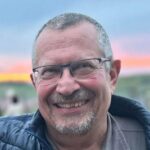Today, about 95,000 Gera residents (“Geraer”) still live in Gera in Thuringia. But since “Geraer” is almost impossible to pronounce without an accident, they call themselves “Gerscher”. Gera is also known as the Otto Dix city after the city’s most famous son (even a shopping arcade bears his name). And the Gerscher people have always been very fond of drinking: the daily consumption of beer used to be 4 liters – per Gerscher! Which makes the origin of the caves understandable.
These are the most beautiful Gera sights
But Gera has many more sights to offer. Here we would like to introduce you to the most beautiful sights in Gera in more detail.
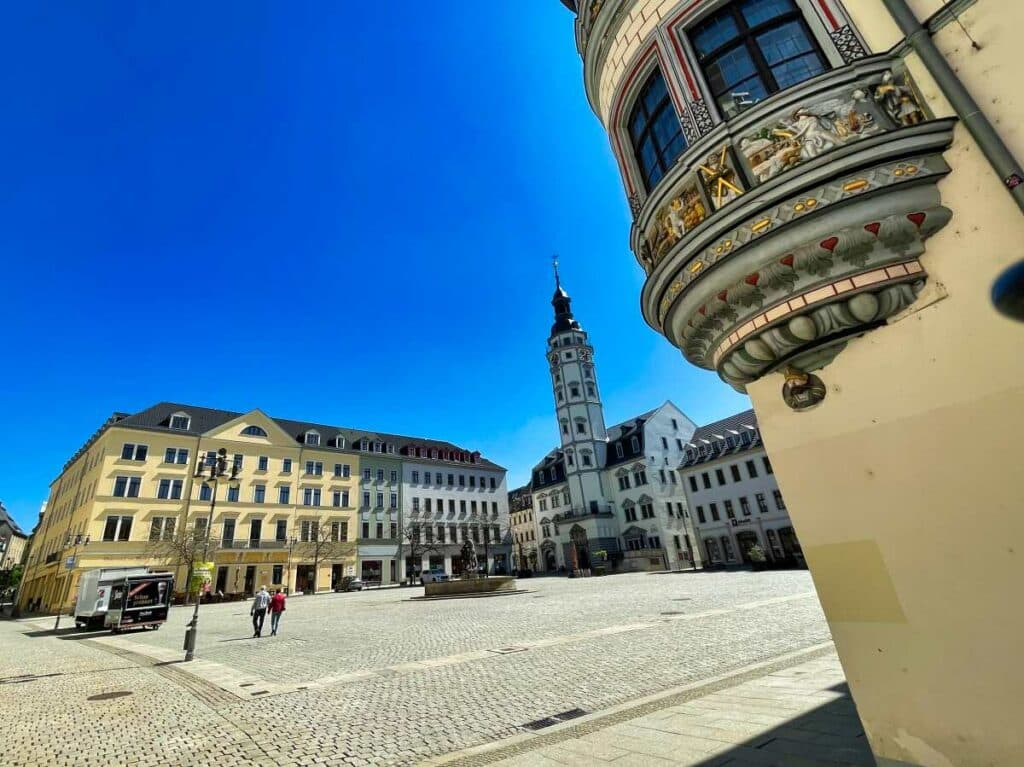
Am Markt
The best place to start our little tour of the old town is the market square. If you come from Kleine Kirchgasse, you will pass the Stadtapotheke Gera, which has been in operation since 1603 and still has a beautiful bay window.
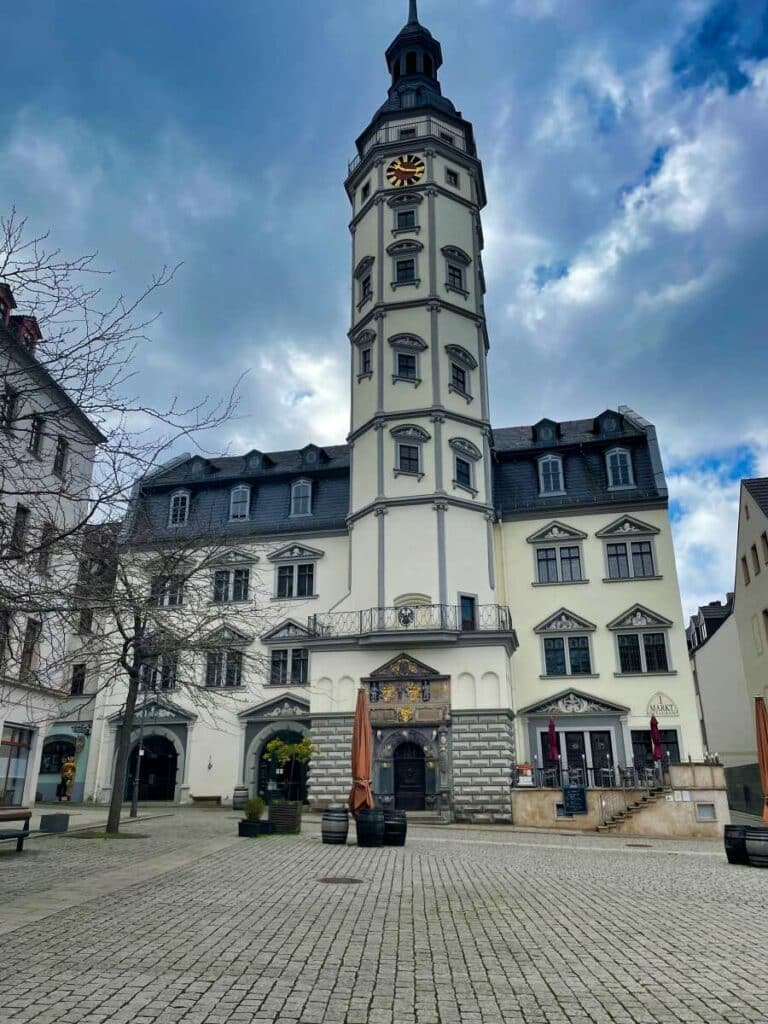
You will find many impressive town houses on the market square. The square is dominated by the town hall, which was built during the Renaissance. The town hall tower is 57 meters high, and at a height of 34 meters there is a platform that can be reached via 163 steps (Mon-Fri 9-17.30, Sat 9-12.30). Those who take on the climb will be rewarded with a magnificent panoramic view that includes many of Gera’s sights!
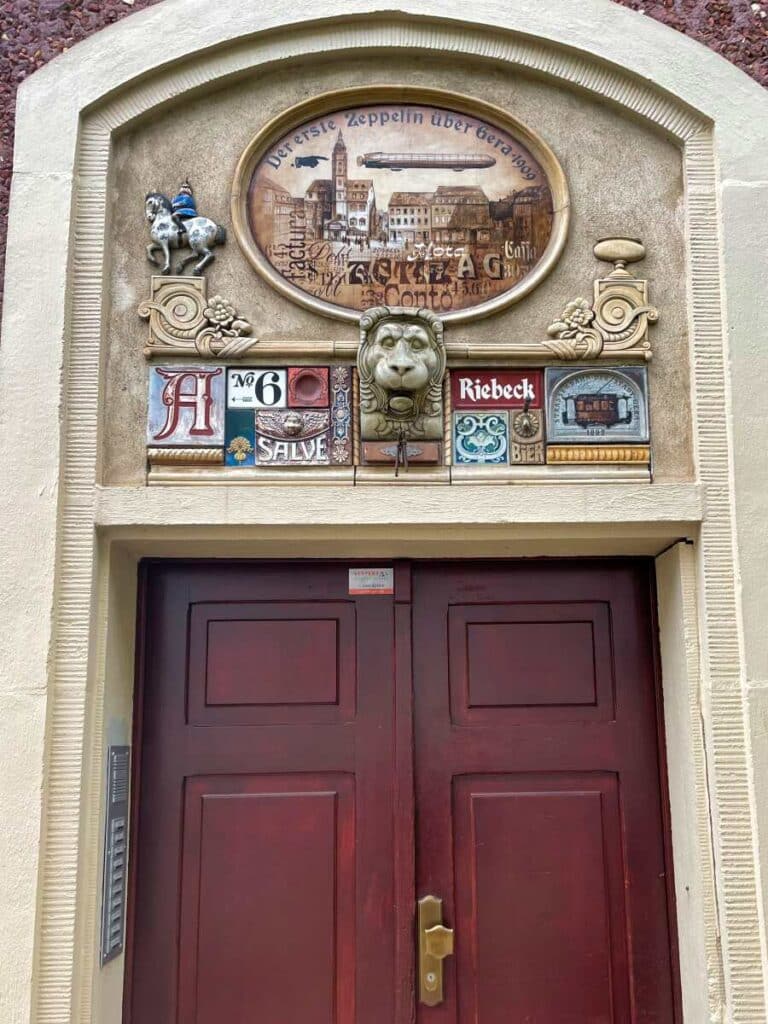
Schuhgasse and Salvatorkirche
From the market square, go past the tourist information office into Schuhgasse and then turn left into Rittergasse. There are house signs on many houses where you can find historical information about Gera. The best known is the house sign on house no. 6 in Schuhgasse: it commemorates the first Zeppelin flight over Gera.

You finally come to the most beautiful church in Gera, the Salvatorkirche, which stands on a hill. It is built in the Baroque style on the outside, but you will be surprised when you enter the interior: The interior of the church was completely renovated in 1903 – in the purest Art Nouveau style, which was ultra-modern at the time.
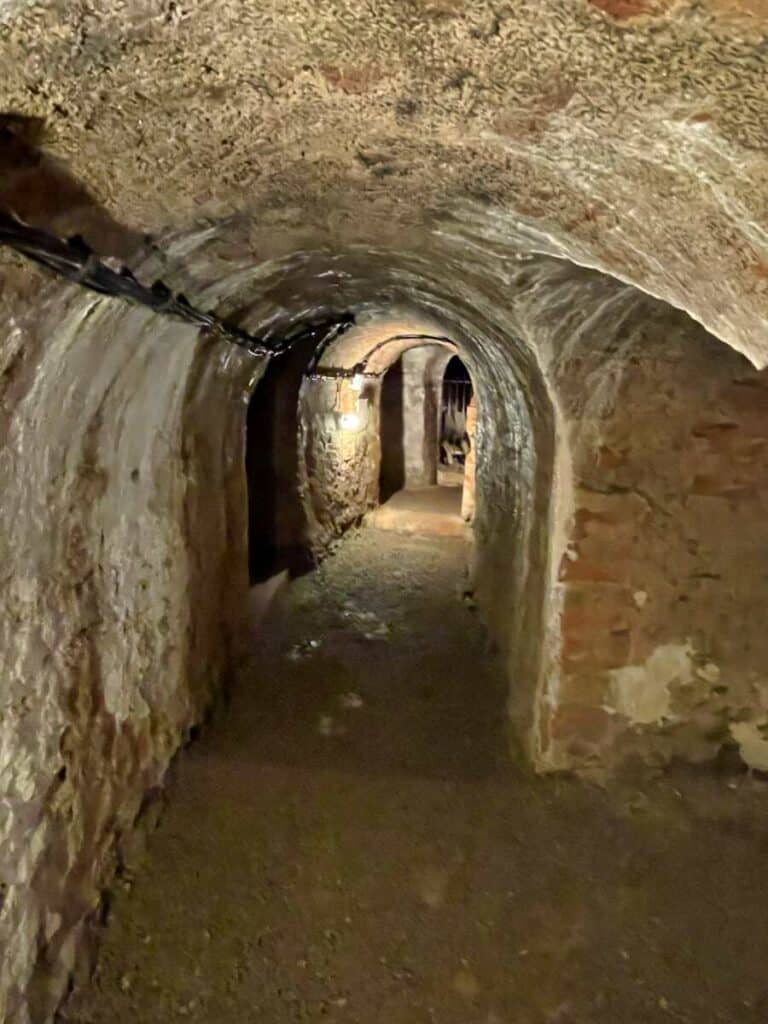
Historical caves
The word Höhler is a combination of the words “cave” and “cellar”. Around 300 years ago, there were numerous Gerscher who had brewing rights. As mentioned above, the daily consumption at that time was 4 liters per Gerscher. In order to keep the beer cool, people dug into the ground (there were plenty of miners back then) and converted the cellars into beer warehouses with a constant temperature of between 9° and 12° Celsius.
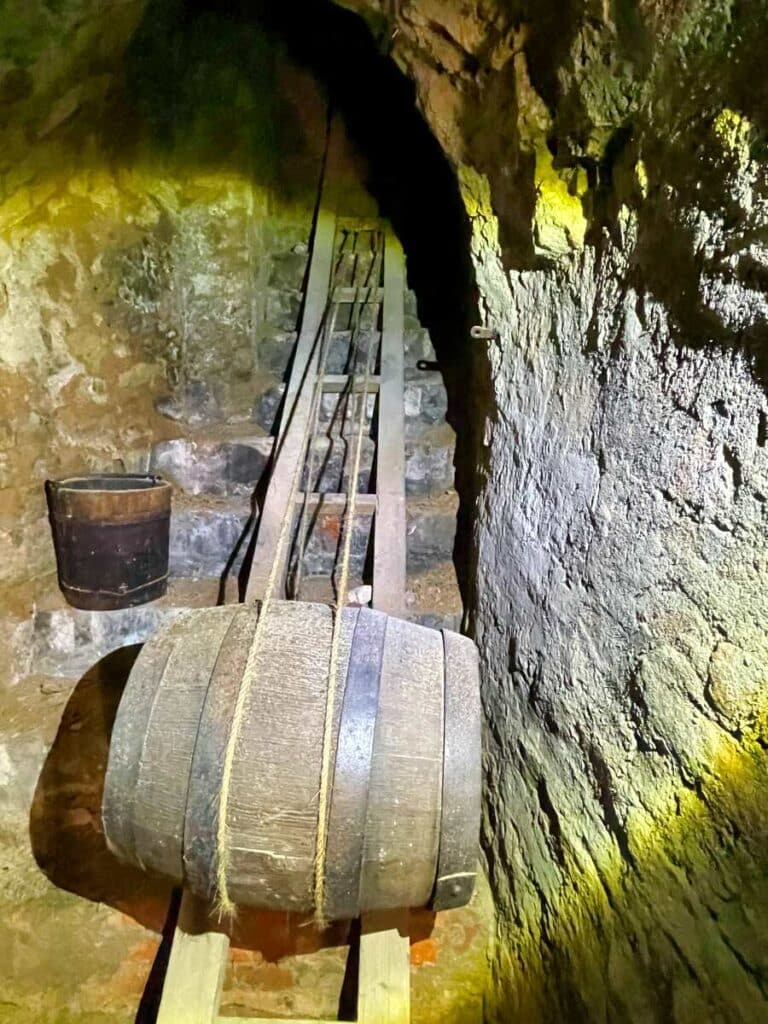
A total of 260 caves are known to have been used as deposits until the end of the 19th century. However, it can be assumed that there are even more caves that are buried and can still be discovered. Most of them are located under private buildings and are therefore not freely accessible – except during the cave festival, which takes place in late fall (there is also an art event called the Cave Biennale every two years).
Accessible, however, is the cave, which today houses the Cave Museum, where regular guided tours are held (Tues-Sun 11 am, 1 pm and 3 pm). These guided tours are an absolute must for every visitor to the Gera. You will learn in an exciting and funny way that if the caves were all connected to each other, they would be 9 km long.
And that a woman’s body lies behind a locked door. And that for 300 years, a cave has been transformed into a stalactite cave with the vain ambition of surpassing the Saalfeld Fairy Grottoes. And that the caves saved the lives of many people during the bombing raids in the Second World War.
The caves are definitely one of the most exciting sights in Gera! Anyone who has become thirsty after all these stories about beer can stock up on Gera cave beer in the museum.
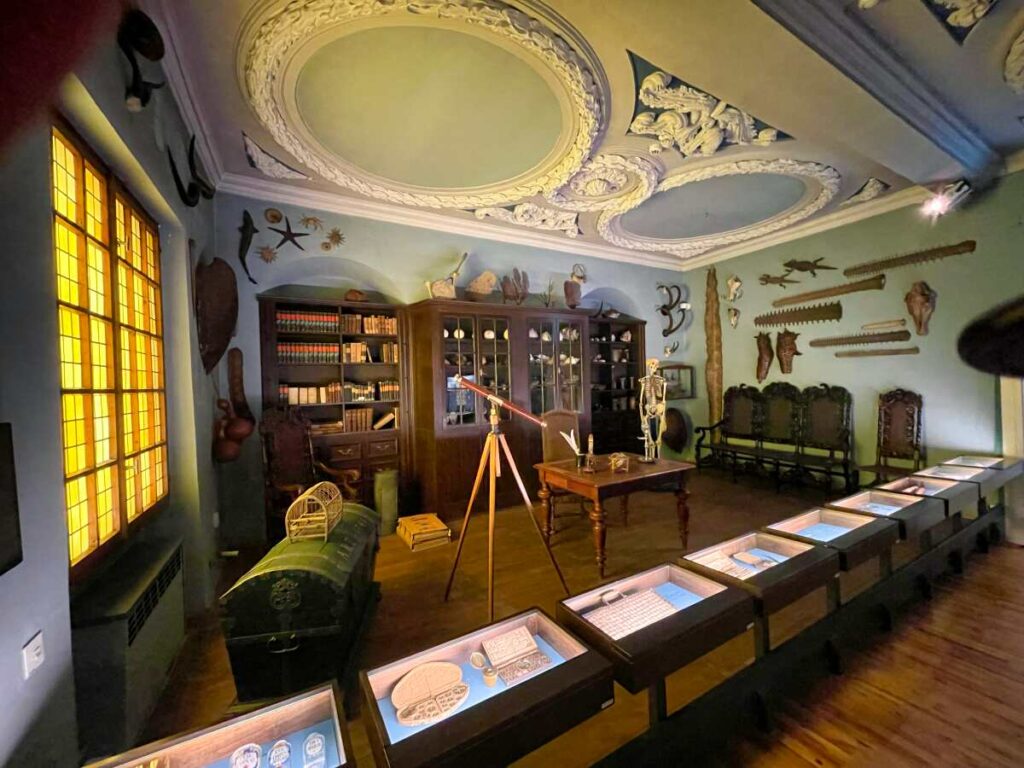
Natural History Museum
Directly above the cave museum you can visit the Museum of Natural History Gera (Tue-Sun 11-17). It is located in the “Schreibersche Haus”, which was built in the 17th century. There you will find, for example, a very interesting presentation of the development of the natural history collections from the apothecary collections to the natural history cabinets to today’s forms of presentation.
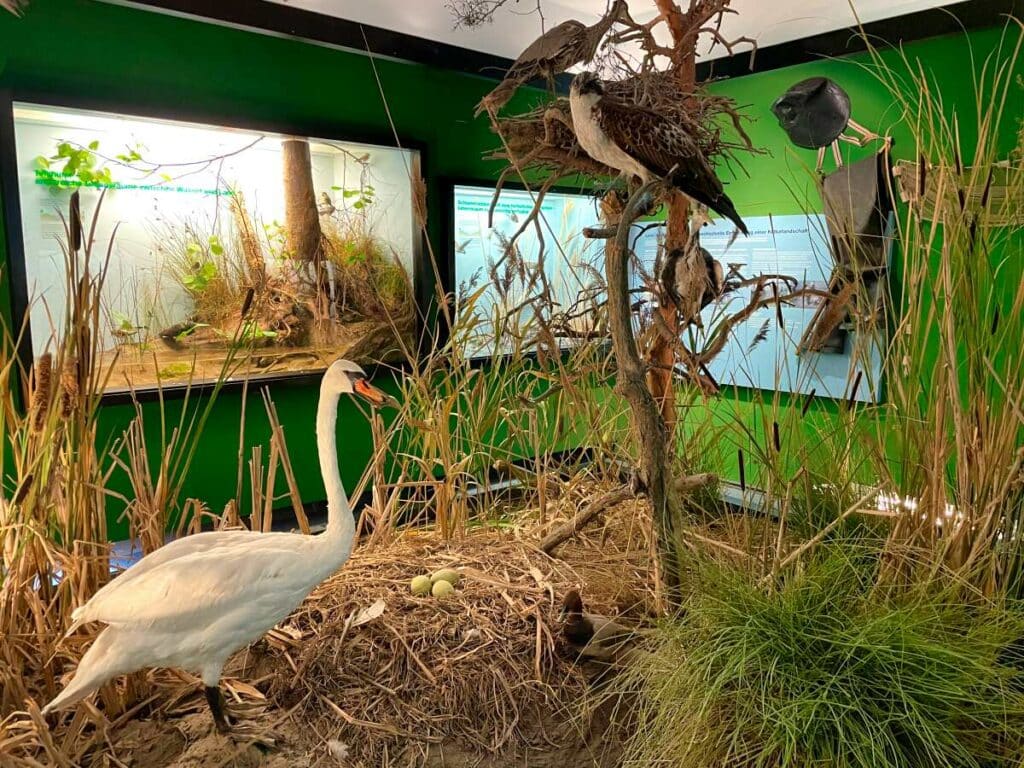
And there is much more information with exhibits on the history of the earth in Eastern Thuringia, on the habitats in the Slate Mountains, the Orlasenke, the Plöthener Ponds and the shell limestone slopes near Jena, on animal life in and around the house and in the city, on flora and fauna on the White Elster, on the history of pearl fishing in the Vogtland and, and, and …
The whole thing is presented very vividly in dioramas, so the museum is also very popular with children.
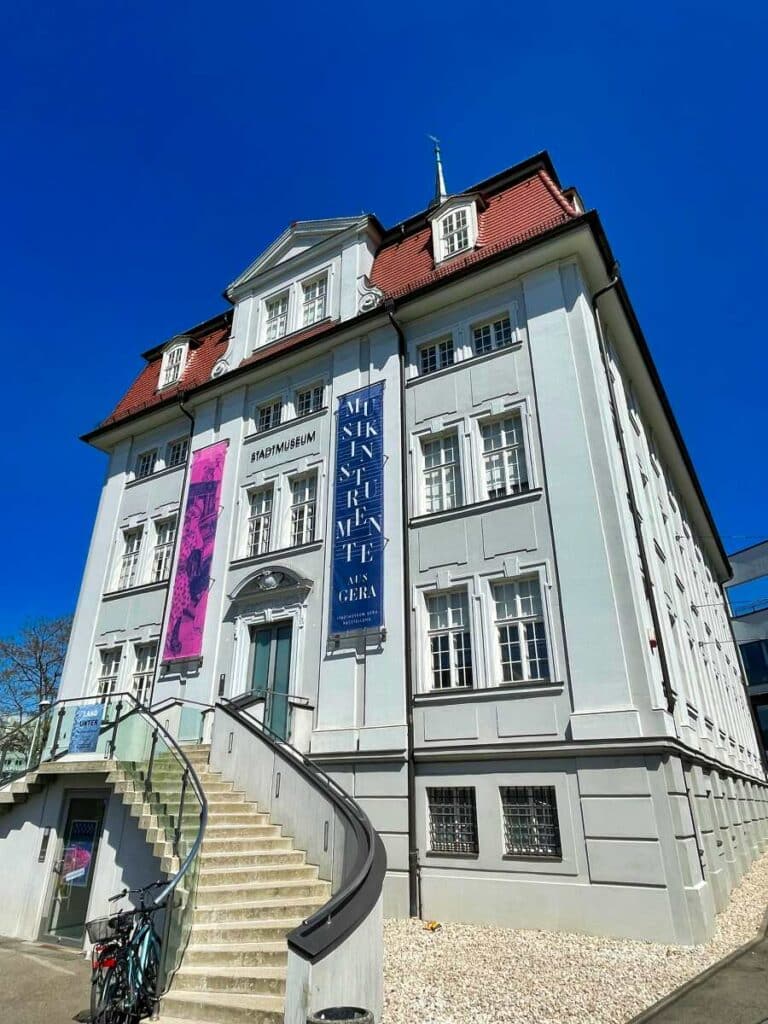
City Museum
The city museum (“Stadtmuseum”) is located in a representative building, which was built in 1780 after a big fire. It is extremely vividly designed and gives you a comprehensive picture of Gera’s history. In the first part, you will find information about Gera as one of the largest Neolithic settlement centers in Thuringia, its founding (first mentioned in a document in 1237), its development into a trading and industrial town in the 16th century, into a residential town in the dominion of Gera and finally into an industrial metropolis in Eastern Thuringia.
The museum’s exhibits are interesting, such as a magnificent winged altar from 1498. Not everyone knows that Gera’s city center was practically completely destroyed in a major fire in 1780. Or that a certain “Her “mann “Tie “tz founded a textile retail business in Gera together with his nephew in 1882, which later developed into the “Hertie” department store chain.
In the second part of the exhibition you will learn everything important about Gera on its way to becoming a big city, its time under the swastika, about the post-war period (Gera as a district town in the former GDR) and its way to the present, again illustrated by numerous original documents.
Museum of Applied Arts
The Museum of Applied Arts (Museum für Angewandte Kunst, Tue-Sun 11am-5pm) is the place to go if you’re interested in contemporary art. There is a permanent exhibition on design and furniture as well as works of art, fashion and jewelry from the Art Deco era to the turn of the millennium, e.g. works by Gerhard Marcks and Aenne Biermann. Changing special exhibitions are also presented. And when you visit the museum, you should definitely pay attention to the different ceilings in the exhibition rooms, which feature impressive wood and stucco decorations.
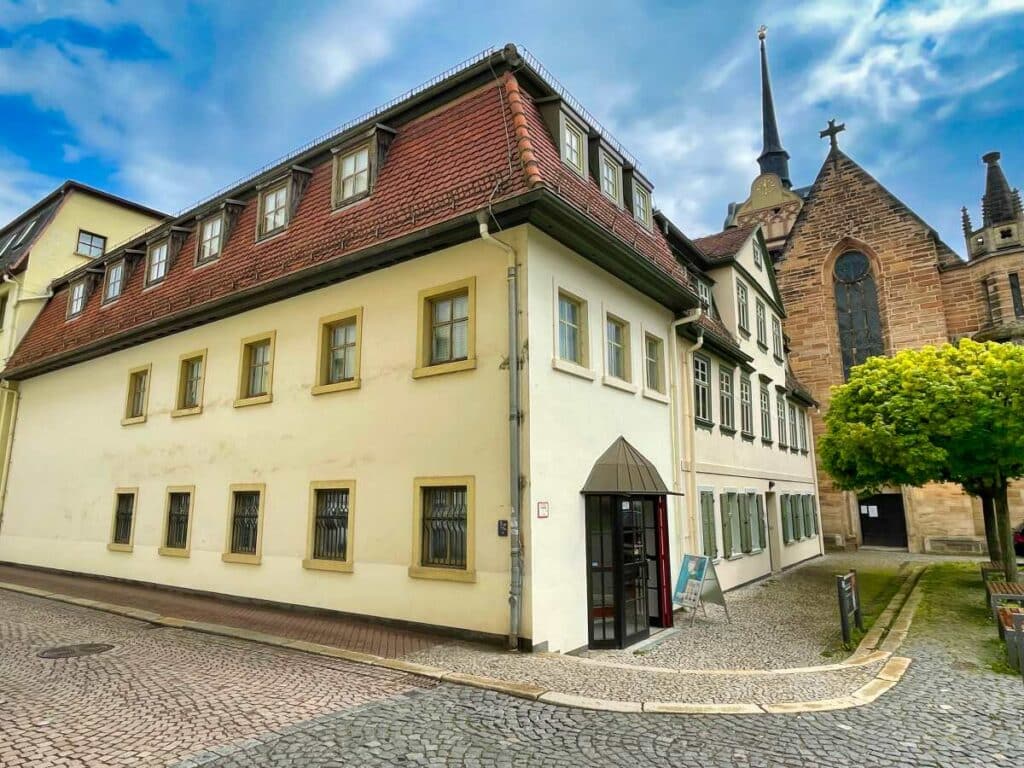
Otto Dix House
The Otto Dix House (Tue-Sun 11 a.m.-5 p.m., it’s worth buying a combination ticket with the Orangery, there’s also a free audio guide) stands near the White Elster River right next to St. Mary’s Church. It is dedicated to the great painter, draftsman and graphic artist, who was one of the most important German and European artists of the 20th century.
Otto Dix was born in this house and spent his youth there. The furnishings in the living areas of the house still exude the atmosphere of a simple working-class household. The house contains important paintings from the artist’s early creative period. You will learn a lot about Dix’s career, which was based on many styles: Expressionism, Dadaism, New Objectivity).
Newspaper clippings and other documents show how he repeatedly met with rejection until he was finally ostracized by the Nazis as “degenerate”. Also of interest are his paintings from 1934 to 1945, in which he used medieval painting techniques and created realistic portraits and landscapes in the style of the old Dutch painters in order to avoid these paintings also being banned.
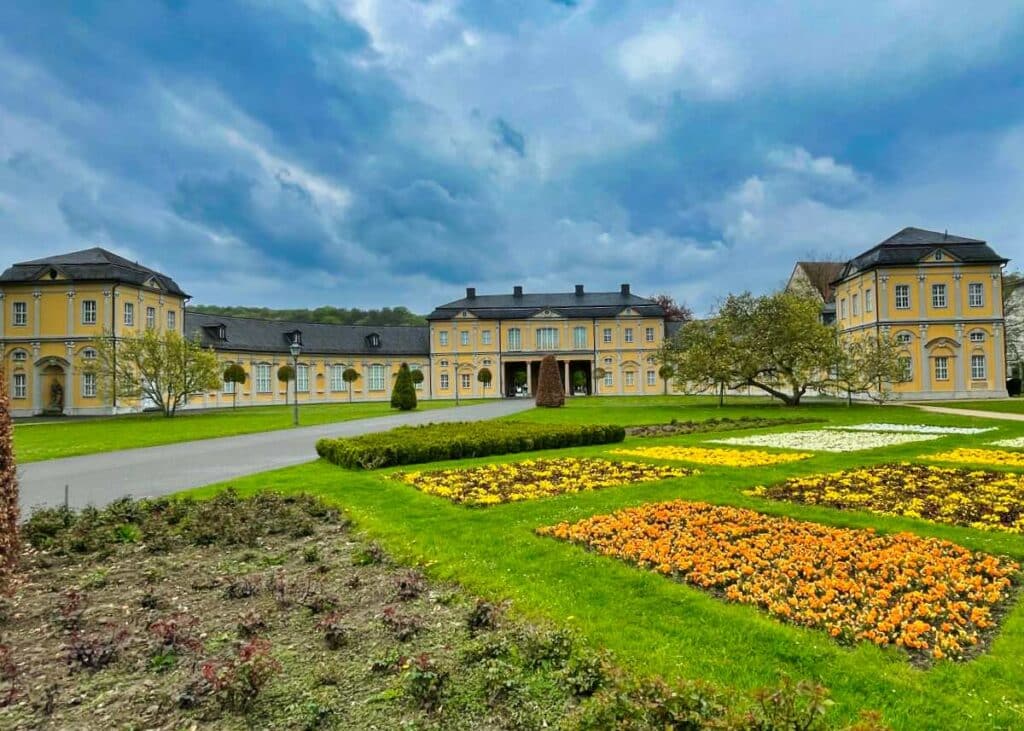
Orangery
Just a few steps away from the Otto Dix House is the Orangery (Tue-Sun 11am-5pm, there is also a free audio guide). In addition to special exhibitions, there is a permanent exhibition on the work of Otto Dix from 1945 until his death. It is astonishing how Dix radically changed his painting style back to an expressive style immediately after the end of the war (he had been drafted into the last Volkssturm and was subsequently taken prisoner of war).
Particularly impressive are the painting “Job”, in which he processed his wartime experiences, and the painting “Self-Portrait with Marcella”, his granddaughter, his last self-portrait. Tragically, his painting style no longer corresponded to the contemporary post-war styles in the GDR and FRG. In the end, however, he was honored with the Federal Cross of Merit and honorary citizenship of Gera.
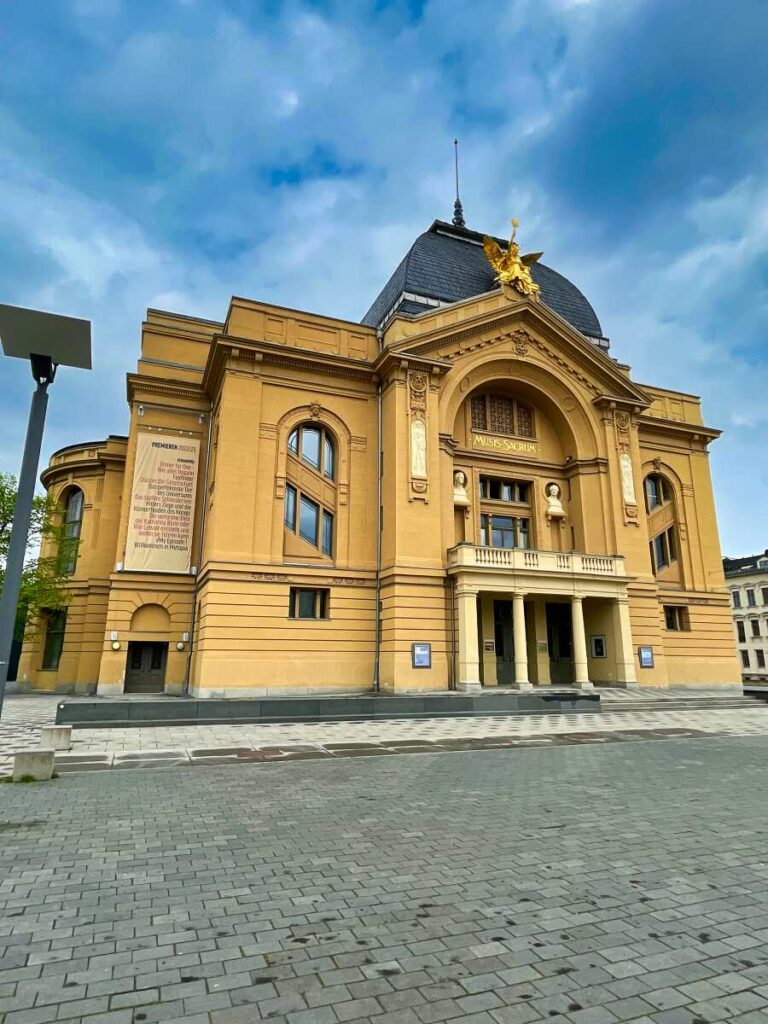
Theater
After just a few steps, you will find yourself in front of the impressive theater, which was opened in 1902 as a new building in the Jungendstil style and, as the Gera “Festliche Hoftheater” with an integrated concert hall, was one of the most spectacular new buildings of its time. It still enjoys an excellent reputation today as Thuringia’s only five-division theater.

Haus Schulenburg
Another must-see and one of Gera’s main attractions is Haus Schulenburg (Nov-March Mon-Fri 10am-4pm, Sat/Sun 2pm-4:30pm, April-Oct Mon-Fri 10am-5pm, Sat/Sun 2pm-5pm). The house was built by the wealthy industrialist and patron Paul Schulenburg, who commissioned the famous Belgian architect and designer Henry van der Velde to plan and build the house in 1913. Van der Velde also designed the interior and furniture and was responsible for the garden design.
The house provides an overview of the work of van der Velde and other renowned artists from his time. You will find original furniture from the time the villa was built, including a pointillist carpet by van der Velde, as well as other original testimonies to the work of van der Velde and many of his contemporary artist colleagues. Take a look at the floors in the individual rooms: they are very ornate, mostly parquet.
Schulenburg was not the only one who had sufficient means to build magnificent estates in Gera’s “Golden Age”, as the following Gera landmarks show.
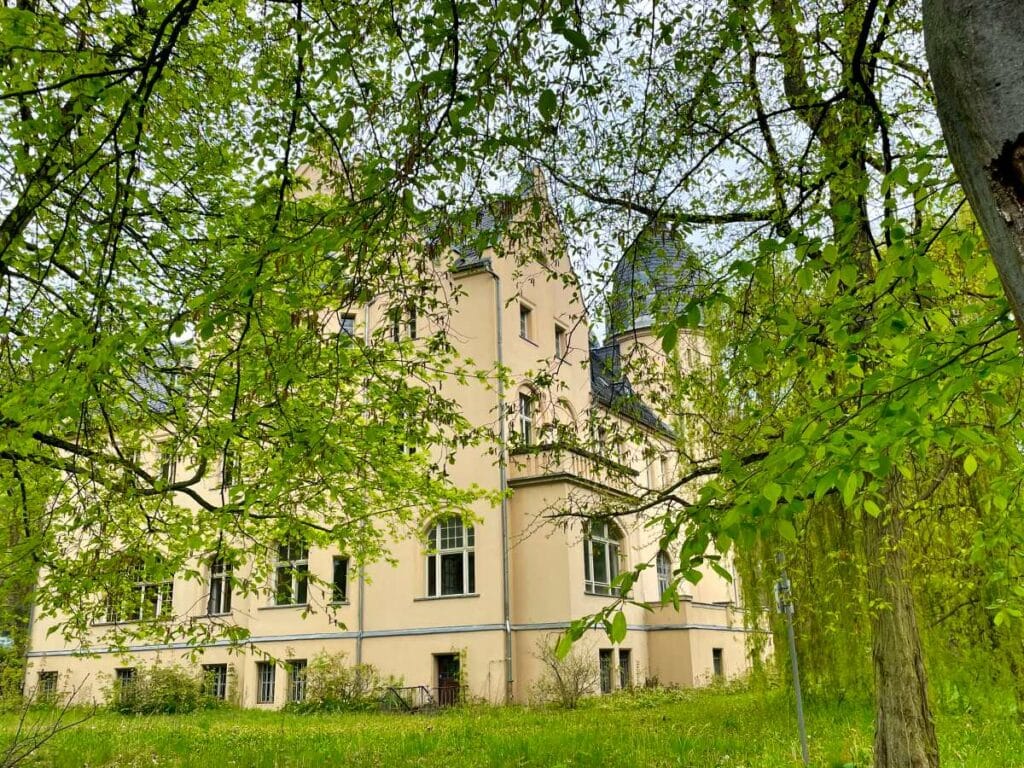
Villas
Scattered all over Gera are numerous villas built by wealthy industrialists and merchants. I would recommend taking a short walk to Vollersdorfer Straße on the corner of Straße des Friedens and Vollersdorfer Straße, where you will find many stately villas: from Villa Koeppe at Straße des Friedens 65 to Villa Wetzel and Villa Brehme, which you can reach by climbing up a small path into the forest opposite Haus 43.
It is the most bizarre villa and is popularly known as “Little Neuschwanstein”. The builder was a baker (hence his penchant for the confectioner’s style) and evil tongues claim that he was only able to finance the building because he baked his rolls smaller than the competition.
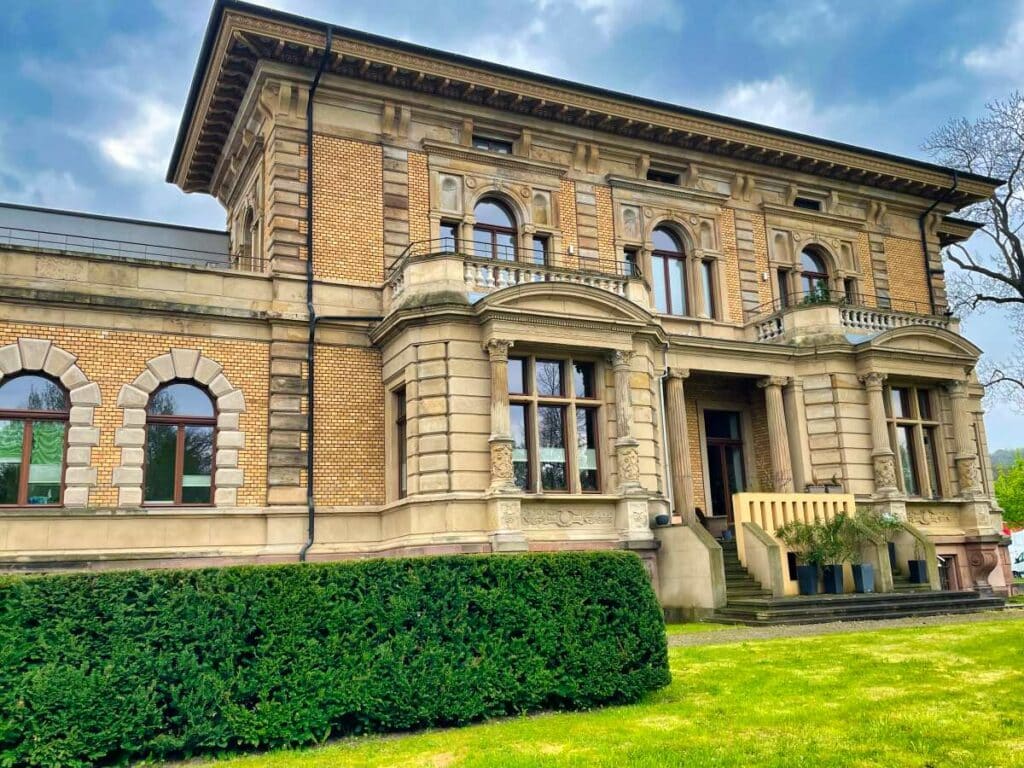
You can discover other splendid and even more stylish villas behind the Heinrichsgrund sports field (Villa Jahr, also accessible after a short walk from the Otto-Dix-Haus), and diagonally across from the theater (Villa Voß).
Gardens and parks in Gera
Gera, the “green city on the Elster”, has a large number of beautiful parks and gardens, which are among the most beautiful Gera sights.
First and foremost, of course, is the Hofwiesenpark, which covers an area of 30 hectares. The park was created in 2007 for the Federal Garden Show in Gera and Ronneburg, and accordingly you will find a flower parade, the Thuringia Pavilion with media café, a flower hall, a nursery garden, the art pavilion, the International Rotarian Jubilee Park, the Garden of the Twin Cities, the Veolia stage and much more. Soccer matches and athletics competitions are held in the nearby Stadium of Friendship, and you can let off steam in the water at the Hofwiesenbad.
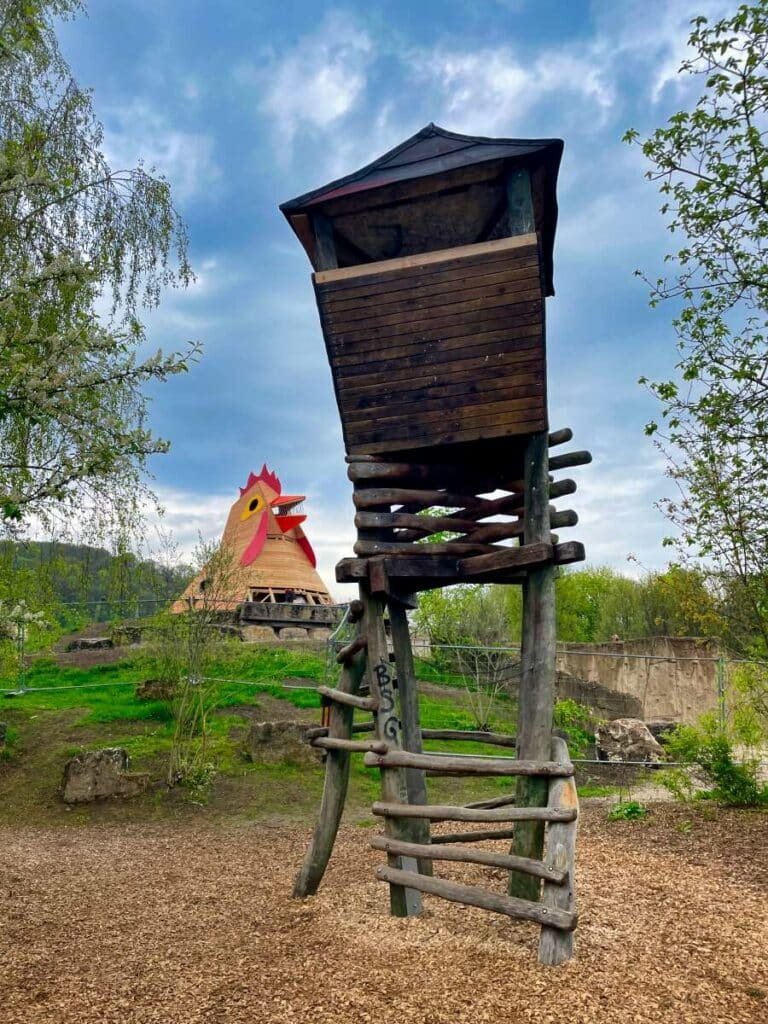
A highlight for children is located in the northern part of the park: the play oval, a huge playground with great playground equipment, climbing and hiding places.
You will find another wonderful garden on the west side of the Orangery: the baroque kitchen garden. You can also visit the gardens of Villa Jahr (April-Oct.), the Botanical Gardens (May-Sept. Tue-Sun 11-17.30) or the Dahlia Garden (April-Oct.) in late summer – or simply take a stroll along the Weiße Elster.
Sights in the surroundings of Gera
Have you seen the many beautiful sights in Gera and want more? There is also a lot to discover in the surroundings of the city!
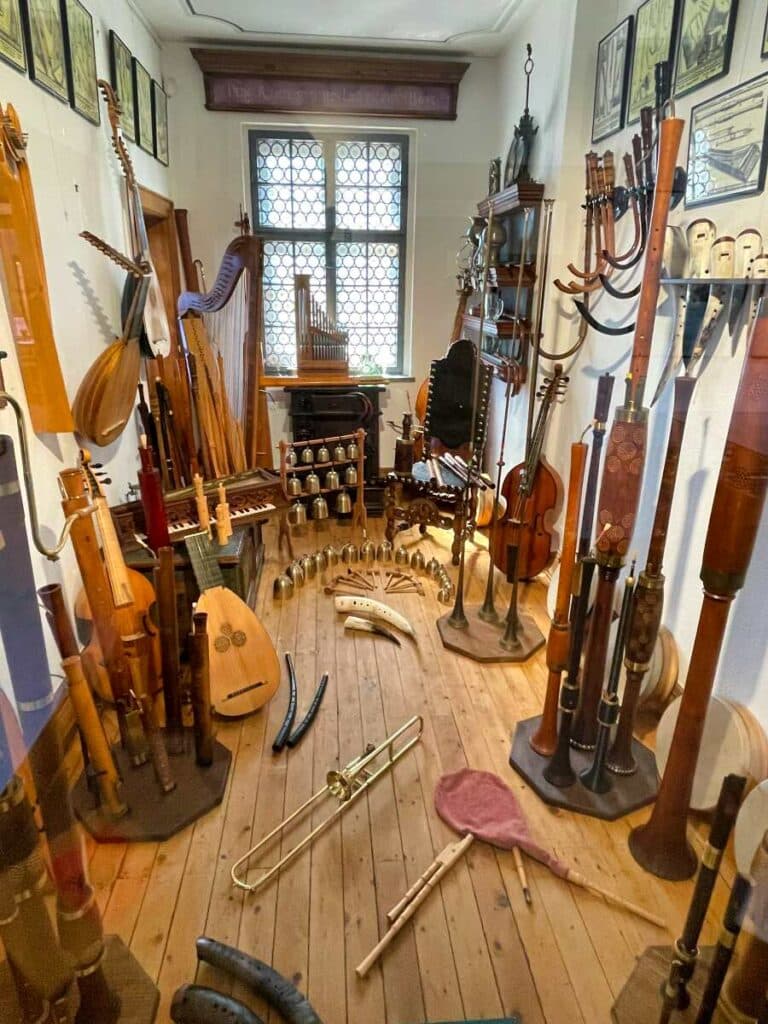
Bad Köstritz
If you drive northwest from Gera, you will reach the small town of Bad Köstritz after a few kilometers. There, in the town center, you will find the main attraction of Bad Köstritz, the Heinrich Schütz House, birthplace of the important baroque composer (Tue-Fri 10-17, Sat/Sun 13-17).
The interesting museum displays testimonies from Heinrich Schütz’s life accompanied by his music and has a room where historical instruments are on display. Oh yes, the museum is housed in a beautiful building from the late 18th century and you can buy a craft sheet in the museum store and build a replica of the house. What other museum can boast its own arts and crafts sheet?

Is that all too dry for you? Then simply book a brewery tour at the Köstritzer brewery and try the famous black beer!
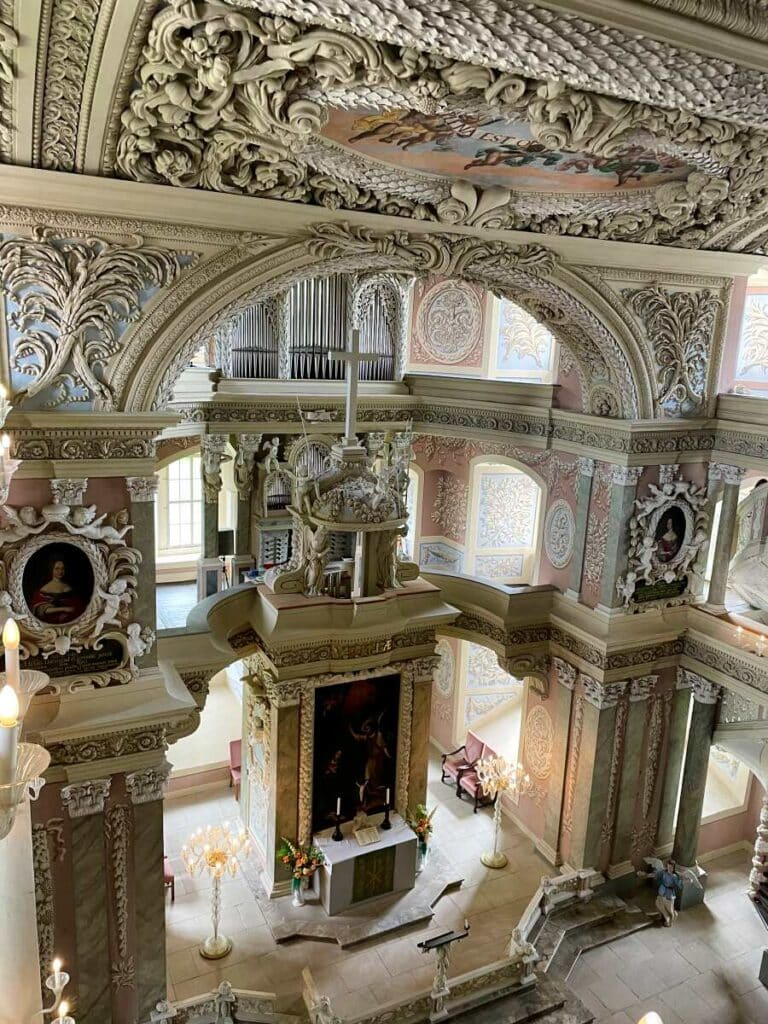
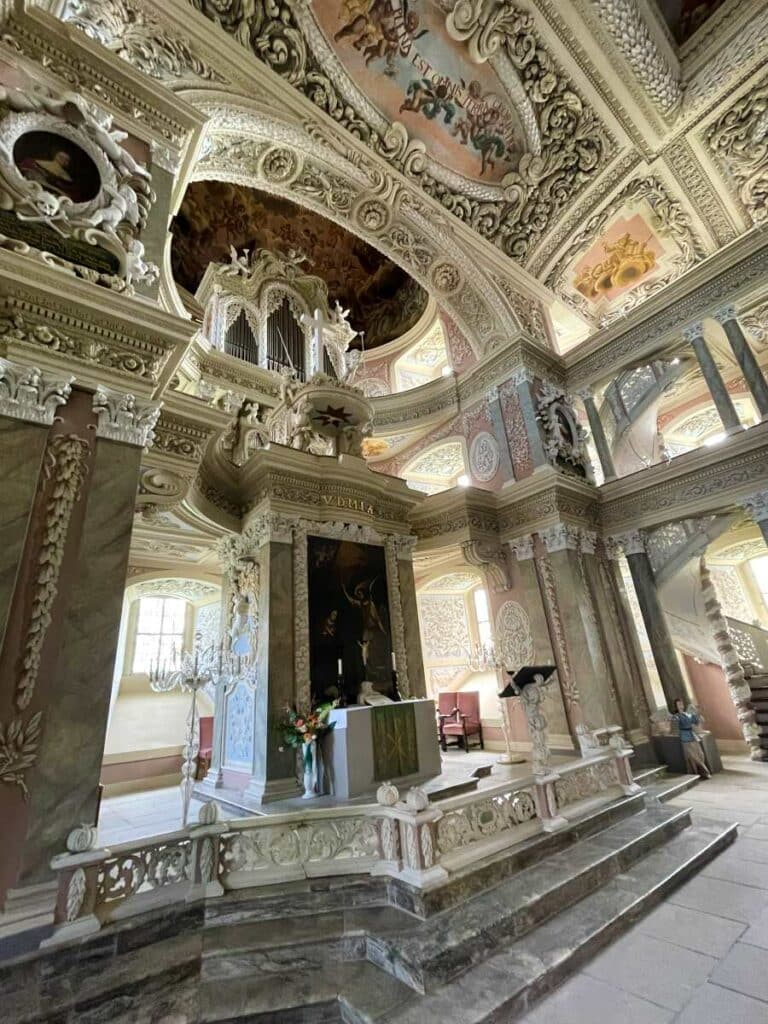
Eisenberg
A little further away is Eisenberg, a pretty little town with very well preserved historic buildings and a nice town museum (Mon-Fri 9am-12pm and 1pm-4pm). A little off the main road, you will find the castle with a beautiful park. If you stand in front of the castle and turn towards the left part of the building, you will find a sign of a castle church, which is not recognizable as such from the outside. But when you step through the entrance gate, you will be overwhelmed by the baroque splendor of the church. With its paintings and stucco decorations, the castle church is certainly one of the most beautiful churches in Thuringia (Tue-Sun 10 am – 4 pm).
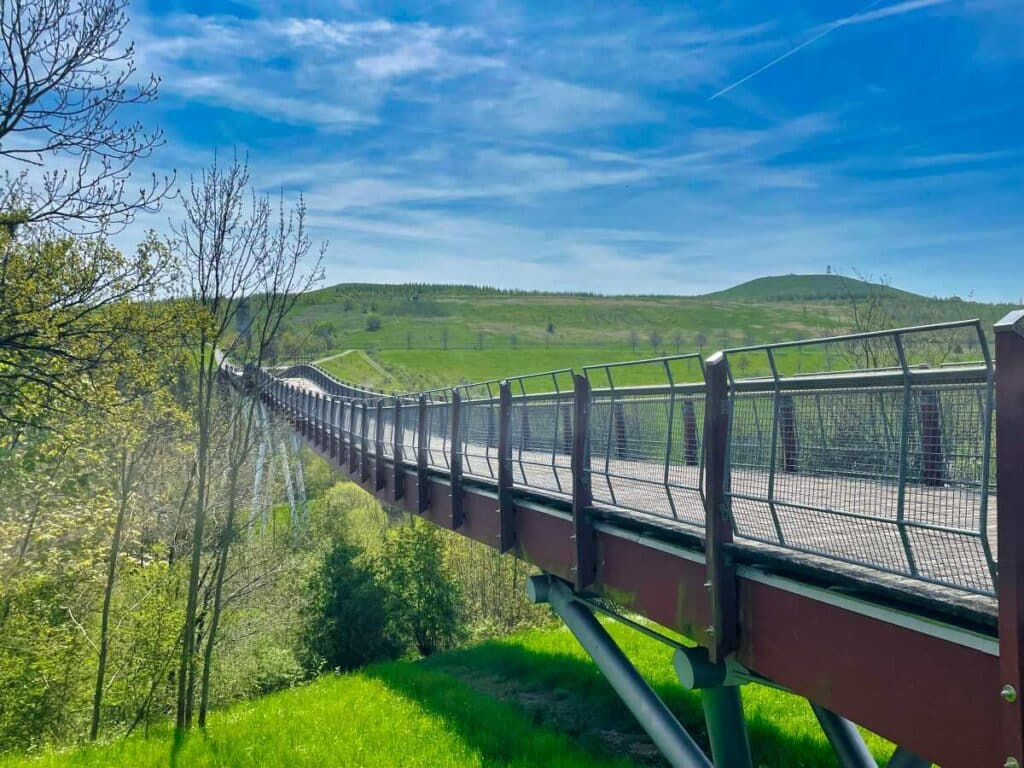
Ronneburg – Neue Landschaft
A former industrial wasteland as a tourist attraction? Uranium was mined in Ronneburg until reunification, and if you google Neue Landschaft, you will find pictures that show what this place used to look like.
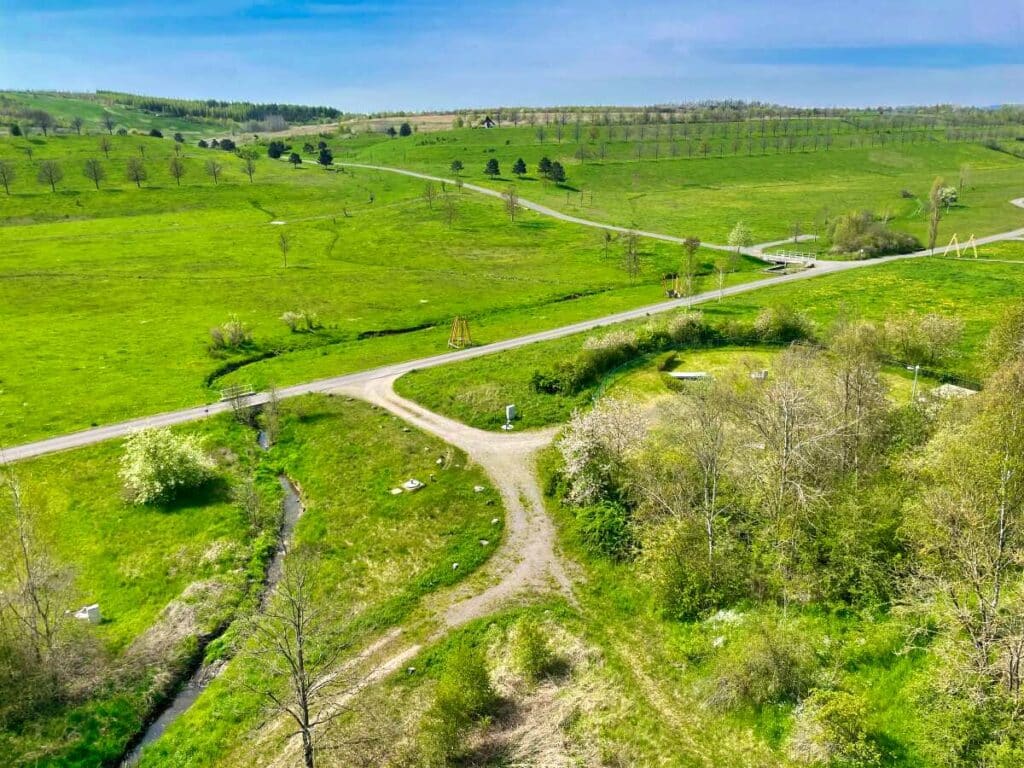
After reunification, the area was thoroughly restored and renaturalized and a fantastic landscape park was completed for the 2007 Federal Garden Show, where you can spend hours: You can marvel at 450 trees of over 140 different species in the arboretum, including all the “Trees of the Year” from 1989 onwards. You can also find out about the climate areas in Thuringia, Germany and worldwide on the climate experience trail, the causes and consequences of the greenhouse effect are described and there is even a little quiz where you have to guess who is the biggest greenhouse sinner.
Or you can climb the futuristic discovery tower, either via stairs or outside via one of eight climbing routes. Benches, loungers and even hammocks are available for relaxing. And if you want to find out more about uranium mining, you can do so in the “Wismut Object 90” exhibition from Thursday to Sunday from 1 pm to 5 pm. You can then return via the 225 m long wooden dragon-tail bridge.

Burg Posterstein
Just a few kilometers behind Ronneburg, you will find a castle straight out of a picture book, situated on a rocky outcrop above the Sprotte valley. In the castle you can visit an interesting museum (Tue-Sun 10am-5pm), where the history of the castle and the region is presented and you can learn a lot about European salon history in the early 19th century. The interactive family exhibition “The Children’s Castle” is particularly worthy of praise. Here, young visitors can playfully explore medieval and regional history.
Buchtipps zu den Gera Sehenswürdigkeiten
Want to find out more about the sights of Gera? Then our book tips are just the thing for you!
In the brand new “MeinTrip” series from Reise Know-How Verlag, a volume on Thuringia has also been published, in which not only the many sights of Gera are described, but also the entire federal state!
Dieser wunderschöne Bildband nimmt euch mit auf eine Reise durch das alte Gera und zeigt euch, wie die Stadt zwischen 1860 und 1960 aussah!
- Schubert, Reinhard (Author)
Spannende und bewegende Geschichten aus der Wendezeit werden euch in diesem Band erzählt, der zwar nicht die Gera Sehenswürdigkeiten beschreibt, aber trotzdem eine tolle Einstimmung auf eure Gera Reise darstellt.
How did you like the trip to the Gera sights? Let us know and write us a comment!

